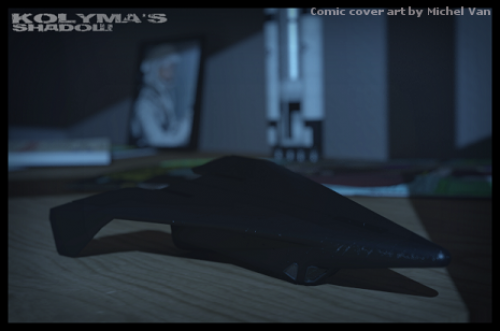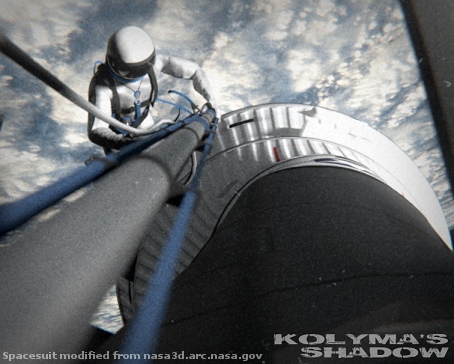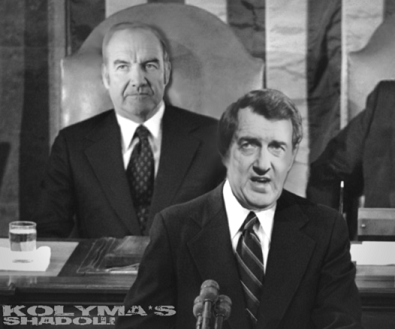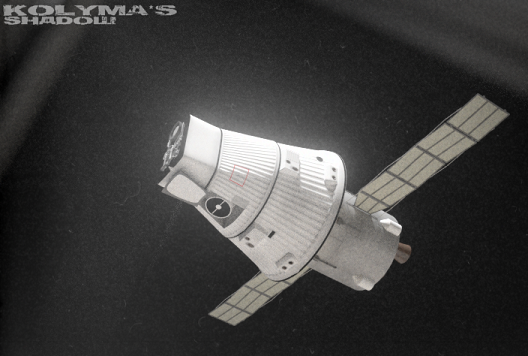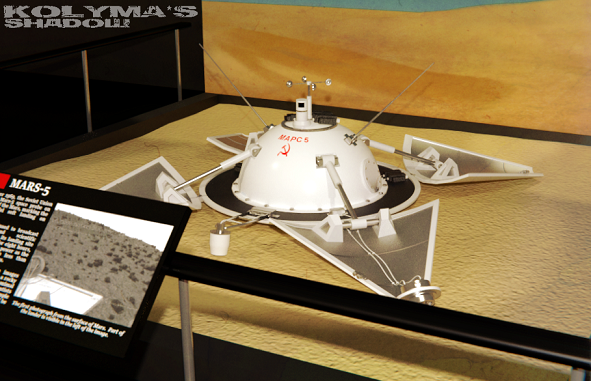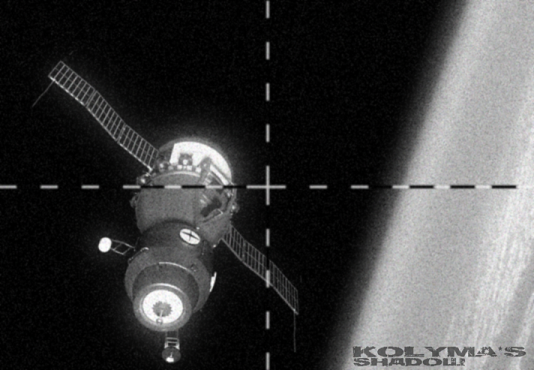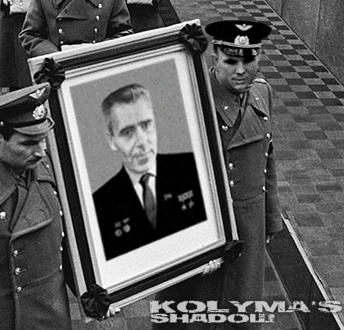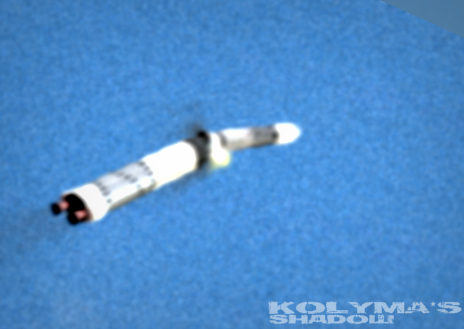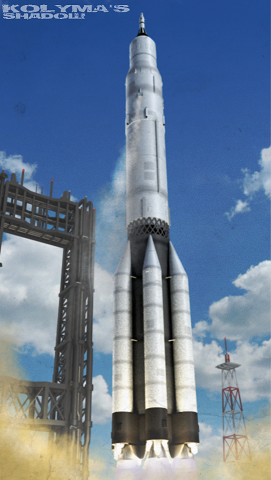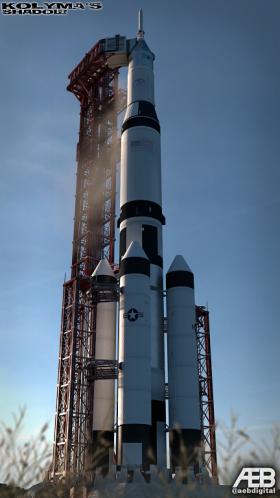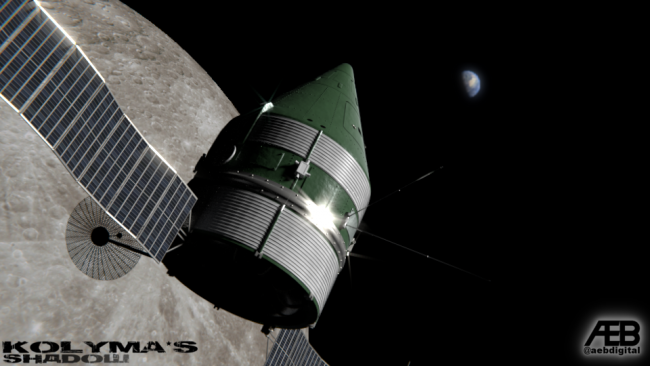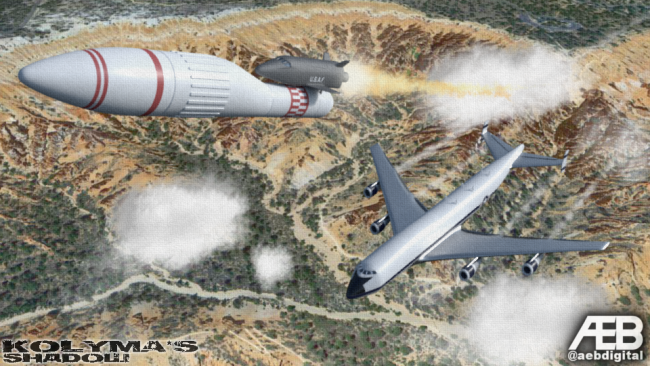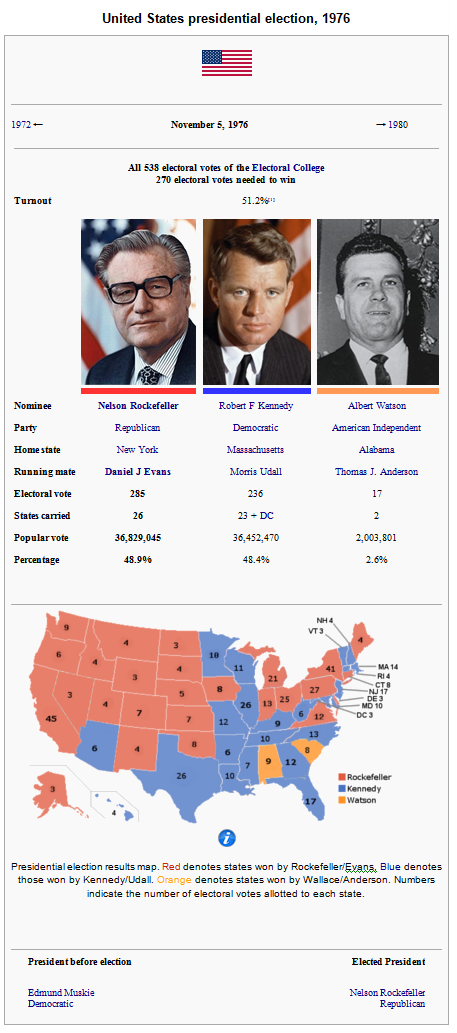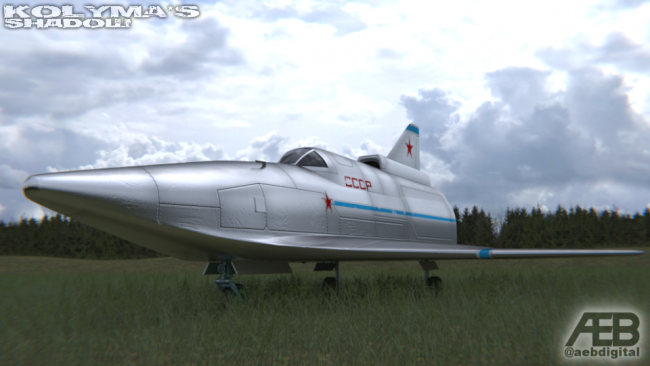Welcome to the final post of Part II of...

Part II Post #10: Wings on Orbit
Following the excitement of the dual Mercury-6/7 mission in 1964, the US manned space programme appeared to go into a period of hibernation. Having pushed its capabilities to the limit, the Mercury programme was wound down, with no further missions flown or planned. At a time when Zarya missions were continuing to break new ground, it appeared to some outsiders that the US had given up trying to compete with the Soviets in manned spaceflight. This impression was an illusion.
Subsonic air drops of the Dynasoar ATV had continued throughout 1963, and in May 1964 Diana was joined in the air by Aura, the first production-model Dynasoar Mk-I. Like her sister-ship, Aura started testing by being carried aloft by a B-52 then dropped for a straight glide and landing at Edwards Air Force Base. This was followed by progressively more complex missions, exploring the full subsonic envelope of Aura’s capabilities and validating the results achieved with Diana.
Meanwhile, Diana was progressing through a set of more aggressive rocket-assisted air-launches, using a small solid rocket (similar to the one planned for Dynasoar’s launch abort system) to propel her to supersonic speeds after being dropped. Astronaut Pete Knight became the first Dynasoar pilot to break the sound barrier on 12th April 1964, flying Diana at speeds in excess of Mach 1.2 before bringing her down to a safe landing at Edwards. This success was quickly followed-up with two more supersonic flights, but on the forth such flight, on 9th June, the nose landing gear collapsed on touchdown. The pilot, Mercury-veteran Neil Armstrong, was able to walk away without major injury, but Diana suffered major structural damage to her nose that ended her career as a manned test vehicle. The problem was later traced to a mechanical failure that hadn’t been spotted by the regular pre-flight checks, and procedures were updated to ensure that the relevant part would undergo regular inspection and preventative maintenance as part of normal operations. Aura was temporarily grounded to undergo inspections of her own gear, but was soon given a clean bill of health and re-commenced flying in early August, with her supersonic debut coming in late September. Soon afterwards, in November, Aura was joined at Edwards by Rhene, the second Mk-I glider.
Whilst airborne tests of the Dynasoar glider were proceeding well, development of the Minerva rocket that was to carry them was going slowly. The original development plan agreed in January 1963 had been extremely aggressive and, as it turned out, unrealistic. Based on the experience obtained from Redstone and the considerable amount of design work that had already been done by Chrysler and the other contractors, von Braun had hoped to be able to launch the small Minerva-1 rocket (based upon the Liquid Rocket Booster of the larger Minerva-22 and 24 models) by the end of 1964. Inevitably, this schedule soon slipped to the right as the details were dug into further and funding proved to be not as forthcoming as had initially been hoped. As the projected launch date slipped into the second half of 1965, critics of von Braun within the Air Force were bemoaning the fact that, had they been allowed to continue with the development of the Titan launcher, Dynasoar could be flying by now. More seriously, the knock-on delay to the larger Minerva-2 and its variants meant that there was no launcher available for the large payloads the CIA and NRO were now developing. Then in August the suborbital flight of the Soviet Orel Raketoplan glider hit the headlines. Taken together with ongoing testing of the heavy Proton launcher, it seemed the Russians were again pulling ahead of the US.
The added pressure from the Soviets and the intelligence community persuaded the Pentagon to release some extra funding for Minerva, and also helped to put a fire under Chrysler’s team. In November 1965 they finally delivered the first Minerva-1 LRB 1st stage to the Cape, almost a year behind their original schedule. However, the extra time taken in development appeared to have paid off when the Minerva-1 successfully carried its test-mass dummy upper stage on a suborbital flight of over 2 500 km across the Atlantic. A second test flight in February 1966, this time using a live Centaur 2nd stage, was also successful, placing a 2.5 tonne NESSA geophysics satellite into a 450 km orbit. Another suborbital test in late February threw up a minor guidance problem when one of the gimbal actuators on the E-1 engine briefly froze in place, but the rocket managed to recover with a divergence from its planned impact point of just under 25 km. With March seeing a second successful orbital mission, the Dynasoar Project Office decided it was time to test their bird in space.
April saw Diana returned to service for the first, unmanned suborbital ballistic test flight for the Dynasoar programme. She was mounted atop a specially-modified Minerva-1 1st stage, designated Minerva-10, which had been fitted with large control fins to counter the effects of Diana’s own aerodynamic surfaces on the stack’s centre of pressure. Following a successful lift-off, the Minerva rocket arced on a southerly course, boosting the spaceplane to a peak velocity of almost 5.8 km/s. The booster spent, Diana separated from her adapter and made a number of brief bursts from her Attitude Control System rockets to orient herself for re-entry. Atmospheric heating of the molybdenum/ Rene-41 skin was within limits as the automatic pilot flexed the ship’s control surfaces to guide it down a radio beam towards the runway at Fortaleza, Brazil. The landing skids deployed and this time the gear held as Diana made an almost perfect landing on the leased military base, confirming that the Dynasoar glider would perform as expected.
Following this Dynasoar-1 (DS-1) mission, Diana would fly aboard a rocket one more time, in a June test of the Launch Abort System. The solid rockets for the LAS were located in the short Adapter stage that on an orbital mission would sit between the glider and the Mission Module. For this test, the Adapter mated Diana to the top of an obsolete Jupiter IRBM, which fired the complete stack out over the Atlantic. At the point of maximum acceleration the LAS rockets fired to propel the glider and Adapter away from the booster. The Adapter then dropped away and Diana made a wide turn to bring her back onto a heading for the runway at Cape Canaveral. Unfortunately, on this occasion the automatic guidance system failed, and Diana ended her illustrious career plunging into the Atlantic Ocean almost a kilometre short of the runway. Despite this sad loss, the test review board quickly determined that the failure was not systemic and that had a pilot been aboard he would have either been able to manually fly to a successful landing or bail out before crashing. Dynasoar was therefore approved to begin manned suborbital tests.
The first manned flight for Minerva came on 7th May 1966, with Neil Armstrong at the controls of Aura for an initial sub-orbital hop to Fortaleza. Once again, the Minerva-10 rocket performed flawlessly, and Armstrong was projected to a maximum altitude of just over 200 km as he arced southwards over the Caribbean. After he had re-entered the atmosphere, Armstrong jettisoned the cockpit heat shield and began a series of slow S-turns, verifying the glider’s aerodynamic performance at hypersonic speeds. Aura behaved as expected, but Armstrong reported the cabin temperature climbing higher than expected, peaking at a toasty 36 degrees Celsius as he entered Brazilian airspace. The fault was later traced to a blocked valve in the water wall cooling system, but didn’t cause any undue problems for Armstrong as he guided Aura to a perfect landing.
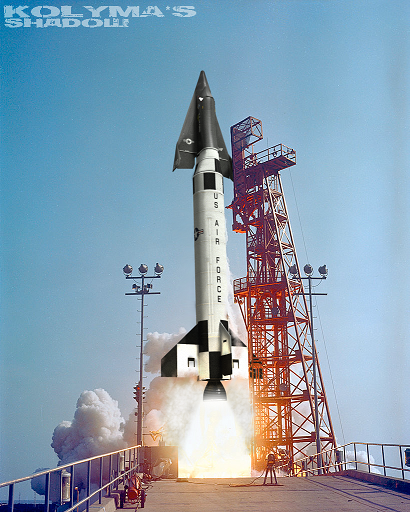
Lift-off for the first manned suborbital flight for Dynasoar on a Minerva-10.
More sub-orbital flights followed, with Dave Merricks piloting Aura on a trans-Atlantic skip-glide flight to Zaragoza, Spain, in July, followed by Pete Knight’s first sub-orbital mission for Rhene in early August. At the same time, the first of the Mk-II gliders, Athena, began drop-tests at Edwards, bringing the fleet up to three. With a successful first launch of the larger Minerva-2 rocket coming in late August, plans were drawn up for Dynasoar to make its orbital debut before the end of the year. This was an event anticipated with increasing impatience by the public and amongst the political classes as there was an increasingly urgent need to counter the perception of a Soviet lead in space.
The Soviets had not been idle during this period, and on top of their continuing testing of Orel they had continued to pursue new on-orbit ‘firsts’ whilst the US tested their gliders. 1965 had seen the Zarya-5 mission in March reach an apogee of almost 2 000 km, giving cosmonauts Leonov and Tokarev the distinction of having travelled further into space than any other human, as well as proving Zarya’s capability to return to Earth from near-lunar speeds. This had been followed in January 1966 with Zarya-6, a solo flight by Viktor Gorbatko, commanding his second mission. Coming close on the heels of the launch of Kosmos-44, Zarya-6 was billed as a demonstration of orbital rendezvous and inspection of an uncooperative target, in the vein of the American Mercury-6/7 mission. In fact Zarya-6 was originally intended to be a full-on attempt at docking in space, a skill that would be vital for the planned permanent Almaz stations. The long delay between Zarya-5 and -6 had been due to installation and testing of the complicated rendezvous and docking apparatus on Zarya-6’s zenith port. Unfortunately for Gorbatko, and for Mishin, Kosmos-44 turned out to be even less cooperative than planned, as the separation from its upper stage had not been a clean one, damaging one of the satellite’s two radio beacons. This slowed Gorbatko’s approach, but when he did finally come into close range he discovered that debris from the damaged beacon was obstructing the docking collar. Thus thwarted, Zarya-6 returned to Earth after three days aloft.
In April 1966 Mishin made a second attempt at the orbital rendezvous test, but the Zarya-7 mission was aborted twenty seconds after lift-off when the M-1 first stage began to deviate from its planned trajectory. The Escape Tower fired automatically, pulling cosmonaut Lev Dyomin and his Zarya capsule clear of the rocket before it was destroyed by ground command. Dyomin suffered no injuries from his ordeal, but the incident delayed the Zarya programme for several more months whilst the M-1 was checked over.
This break in Zarya missions gave Chelomei a chance to shine, and in July 1966 Orel took to the skies once more on a six-hour orbital mission piloted by Vladimir Shatalov. With three successful flights under it’s belt following the failure of the second TMK-Mars launch the previous November, Chelomei felt confident enough in Proton to entrust his pilots to the two-stage version of the launcher. In addition to demonstrating the orbital capabilities of the manned Orel spaceplane, the Raketoplan’s AOO was fitted out with a sophisticated suite of electronic reconnaissance systems. Chelomei hoped to use these to demonstrate the military value of his system to a sceptical Kremlin, as well as establishing a Soviet lead over the US in spaceplane technology. After a perfect launch, Shatalov’s twelve-hour orbital mission succeeded in tracking and characterising a number of test transmitters Chelomei had set up to validate the ELINT sensors, and the flight was capped by a faultless re-entry and landing, with Orel’s jet engine successfully guiding it to the runway at Tyuratam. Coming hot on the heels of Mars-3’s entry into martian orbit, the Soviet and international press hailed the Orel mission as a further demonstration of the USSR’s pulling ahead in space technology. Chelomei hoped that this triumph would boost his own arguments to the bosses in Moscow that the Raketoplan was a useful Cold War tool, not the technological dead-end Mishin was claiming it to be.
The US response finally came in November 1966, as pilot Neil Armstrong ascended the launch tower at Cape Canaveral to join his ship, Aura, at the peak of a Minerva-22 rocket. The gleaming missile was cloaked in a gown of white steam in the early morning light as the humidity in the air condensed against the oxygen-hydrogen filled upper stage, the first use of these propellants on a manned spacecraft. Armstrong crossed the bridge to enter the hatch on the Dynasoar glider’s roof, strapping himself into the ejection seat that, together with the solid rockets of the Adapter stage, would enable his escape should anything go wrong. With the hatch closed and locked by pad personnel, daylight could only enter the cabin through the two small side windows, as the main windshield was covered by a protective heat-shield that would be jettisoned after re-entry. For now, the blocked windows helped Armstrong to maintain his focus on the instrument panel in front of him as he ran through the pre-launch checks with Mission Control.
At 08:15 local time on 10th November, the E-1 engines of the kerolox first stage and twin Liquid Rocket Boosters were lit and the Minerva-22 was released into the Florida sky. Guidance control for the rocket was linked into Aura’s systems, in theory allowing Armstrong to manually fly the missile from his cabin controls, but for this first flight the systems were fully automated. They performed exactly per design, initiating LRB shutdown and separation right on cue, then guiding the first stage to burn-out and separation before lighting the 2nd stage’s single J-2 engine to power the spaceplane the rest of the way up hill to orbit. Armstrong calmly reported all systems nominal as the stage completed its burn and the small Mission Module manoeuvring thrusters pushed Aura away from her carrier rocket and into free orbital flight.
Almost a decade after the project had started, Dynasoar had reached the heavens. But for some back on Earth this achievement, whilst impressive, was not enough. If America wanted to truly demonstrate her superiority in the Space Race, something altogether more spectacular would be needed, and there was one man in particular who felt sure he knew what that should be.
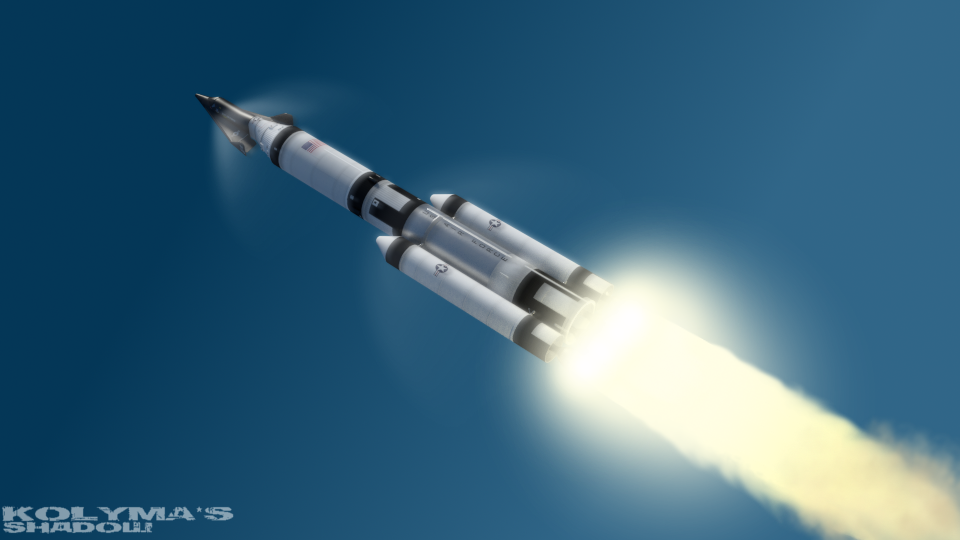
Neil Armstrong ascends to space on the first orbital mission of Dynasoar, 10th November 1966.

Part II Post #10: Wings on Orbit
Following the excitement of the dual Mercury-6/7 mission in 1964, the US manned space programme appeared to go into a period of hibernation. Having pushed its capabilities to the limit, the Mercury programme was wound down, with no further missions flown or planned. At a time when Zarya missions were continuing to break new ground, it appeared to some outsiders that the US had given up trying to compete with the Soviets in manned spaceflight. This impression was an illusion.
Subsonic air drops of the Dynasoar ATV had continued throughout 1963, and in May 1964 Diana was joined in the air by Aura, the first production-model Dynasoar Mk-I. Like her sister-ship, Aura started testing by being carried aloft by a B-52 then dropped for a straight glide and landing at Edwards Air Force Base. This was followed by progressively more complex missions, exploring the full subsonic envelope of Aura’s capabilities and validating the results achieved with Diana.
Meanwhile, Diana was progressing through a set of more aggressive rocket-assisted air-launches, using a small solid rocket (similar to the one planned for Dynasoar’s launch abort system) to propel her to supersonic speeds after being dropped. Astronaut Pete Knight became the first Dynasoar pilot to break the sound barrier on 12th April 1964, flying Diana at speeds in excess of Mach 1.2 before bringing her down to a safe landing at Edwards. This success was quickly followed-up with two more supersonic flights, but on the forth such flight, on 9th June, the nose landing gear collapsed on touchdown. The pilot, Mercury-veteran Neil Armstrong, was able to walk away without major injury, but Diana suffered major structural damage to her nose that ended her career as a manned test vehicle. The problem was later traced to a mechanical failure that hadn’t been spotted by the regular pre-flight checks, and procedures were updated to ensure that the relevant part would undergo regular inspection and preventative maintenance as part of normal operations. Aura was temporarily grounded to undergo inspections of her own gear, but was soon given a clean bill of health and re-commenced flying in early August, with her supersonic debut coming in late September. Soon afterwards, in November, Aura was joined at Edwards by Rhene, the second Mk-I glider.
Whilst airborne tests of the Dynasoar glider were proceeding well, development of the Minerva rocket that was to carry them was going slowly. The original development plan agreed in January 1963 had been extremely aggressive and, as it turned out, unrealistic. Based on the experience obtained from Redstone and the considerable amount of design work that had already been done by Chrysler and the other contractors, von Braun had hoped to be able to launch the small Minerva-1 rocket (based upon the Liquid Rocket Booster of the larger Minerva-22 and 24 models) by the end of 1964. Inevitably, this schedule soon slipped to the right as the details were dug into further and funding proved to be not as forthcoming as had initially been hoped. As the projected launch date slipped into the second half of 1965, critics of von Braun within the Air Force were bemoaning the fact that, had they been allowed to continue with the development of the Titan launcher, Dynasoar could be flying by now. More seriously, the knock-on delay to the larger Minerva-2 and its variants meant that there was no launcher available for the large payloads the CIA and NRO were now developing. Then in August the suborbital flight of the Soviet Orel Raketoplan glider hit the headlines. Taken together with ongoing testing of the heavy Proton launcher, it seemed the Russians were again pulling ahead of the US.
The added pressure from the Soviets and the intelligence community persuaded the Pentagon to release some extra funding for Minerva, and also helped to put a fire under Chrysler’s team. In November 1965 they finally delivered the first Minerva-1 LRB 1st stage to the Cape, almost a year behind their original schedule. However, the extra time taken in development appeared to have paid off when the Minerva-1 successfully carried its test-mass dummy upper stage on a suborbital flight of over 2 500 km across the Atlantic. A second test flight in February 1966, this time using a live Centaur 2nd stage, was also successful, placing a 2.5 tonne NESSA geophysics satellite into a 450 km orbit. Another suborbital test in late February threw up a minor guidance problem when one of the gimbal actuators on the E-1 engine briefly froze in place, but the rocket managed to recover with a divergence from its planned impact point of just under 25 km. With March seeing a second successful orbital mission, the Dynasoar Project Office decided it was time to test their bird in space.
April saw Diana returned to service for the first, unmanned suborbital ballistic test flight for the Dynasoar programme. She was mounted atop a specially-modified Minerva-1 1st stage, designated Minerva-10, which had been fitted with large control fins to counter the effects of Diana’s own aerodynamic surfaces on the stack’s centre of pressure. Following a successful lift-off, the Minerva rocket arced on a southerly course, boosting the spaceplane to a peak velocity of almost 5.8 km/s. The booster spent, Diana separated from her adapter and made a number of brief bursts from her Attitude Control System rockets to orient herself for re-entry. Atmospheric heating of the molybdenum/ Rene-41 skin was within limits as the automatic pilot flexed the ship’s control surfaces to guide it down a radio beam towards the runway at Fortaleza, Brazil. The landing skids deployed and this time the gear held as Diana made an almost perfect landing on the leased military base, confirming that the Dynasoar glider would perform as expected.
Following this Dynasoar-1 (DS-1) mission, Diana would fly aboard a rocket one more time, in a June test of the Launch Abort System. The solid rockets for the LAS were located in the short Adapter stage that on an orbital mission would sit between the glider and the Mission Module. For this test, the Adapter mated Diana to the top of an obsolete Jupiter IRBM, which fired the complete stack out over the Atlantic. At the point of maximum acceleration the LAS rockets fired to propel the glider and Adapter away from the booster. The Adapter then dropped away and Diana made a wide turn to bring her back onto a heading for the runway at Cape Canaveral. Unfortunately, on this occasion the automatic guidance system failed, and Diana ended her illustrious career plunging into the Atlantic Ocean almost a kilometre short of the runway. Despite this sad loss, the test review board quickly determined that the failure was not systemic and that had a pilot been aboard he would have either been able to manually fly to a successful landing or bail out before crashing. Dynasoar was therefore approved to begin manned suborbital tests.
The first manned flight for Minerva came on 7th May 1966, with Neil Armstrong at the controls of Aura for an initial sub-orbital hop to Fortaleza. Once again, the Minerva-10 rocket performed flawlessly, and Armstrong was projected to a maximum altitude of just over 200 km as he arced southwards over the Caribbean. After he had re-entered the atmosphere, Armstrong jettisoned the cockpit heat shield and began a series of slow S-turns, verifying the glider’s aerodynamic performance at hypersonic speeds. Aura behaved as expected, but Armstrong reported the cabin temperature climbing higher than expected, peaking at a toasty 36 degrees Celsius as he entered Brazilian airspace. The fault was later traced to a blocked valve in the water wall cooling system, but didn’t cause any undue problems for Armstrong as he guided Aura to a perfect landing.

Lift-off for the first manned suborbital flight for Dynasoar on a Minerva-10.
More sub-orbital flights followed, with Dave Merricks piloting Aura on a trans-Atlantic skip-glide flight to Zaragoza, Spain, in July, followed by Pete Knight’s first sub-orbital mission for Rhene in early August. At the same time, the first of the Mk-II gliders, Athena, began drop-tests at Edwards, bringing the fleet up to three. With a successful first launch of the larger Minerva-2 rocket coming in late August, plans were drawn up for Dynasoar to make its orbital debut before the end of the year. This was an event anticipated with increasing impatience by the public and amongst the political classes as there was an increasingly urgent need to counter the perception of a Soviet lead in space.
The Soviets had not been idle during this period, and on top of their continuing testing of Orel they had continued to pursue new on-orbit ‘firsts’ whilst the US tested their gliders. 1965 had seen the Zarya-5 mission in March reach an apogee of almost 2 000 km, giving cosmonauts Leonov and Tokarev the distinction of having travelled further into space than any other human, as well as proving Zarya’s capability to return to Earth from near-lunar speeds. This had been followed in January 1966 with Zarya-6, a solo flight by Viktor Gorbatko, commanding his second mission. Coming close on the heels of the launch of Kosmos-44, Zarya-6 was billed as a demonstration of orbital rendezvous and inspection of an uncooperative target, in the vein of the American Mercury-6/7 mission. In fact Zarya-6 was originally intended to be a full-on attempt at docking in space, a skill that would be vital for the planned permanent Almaz stations. The long delay between Zarya-5 and -6 had been due to installation and testing of the complicated rendezvous and docking apparatus on Zarya-6’s zenith port. Unfortunately for Gorbatko, and for Mishin, Kosmos-44 turned out to be even less cooperative than planned, as the separation from its upper stage had not been a clean one, damaging one of the satellite’s two radio beacons. This slowed Gorbatko’s approach, but when he did finally come into close range he discovered that debris from the damaged beacon was obstructing the docking collar. Thus thwarted, Zarya-6 returned to Earth after three days aloft.
In April 1966 Mishin made a second attempt at the orbital rendezvous test, but the Zarya-7 mission was aborted twenty seconds after lift-off when the M-1 first stage began to deviate from its planned trajectory. The Escape Tower fired automatically, pulling cosmonaut Lev Dyomin and his Zarya capsule clear of the rocket before it was destroyed by ground command. Dyomin suffered no injuries from his ordeal, but the incident delayed the Zarya programme for several more months whilst the M-1 was checked over.
This break in Zarya missions gave Chelomei a chance to shine, and in July 1966 Orel took to the skies once more on a six-hour orbital mission piloted by Vladimir Shatalov. With three successful flights under it’s belt following the failure of the second TMK-Mars launch the previous November, Chelomei felt confident enough in Proton to entrust his pilots to the two-stage version of the launcher. In addition to demonstrating the orbital capabilities of the manned Orel spaceplane, the Raketoplan’s AOO was fitted out with a sophisticated suite of electronic reconnaissance systems. Chelomei hoped to use these to demonstrate the military value of his system to a sceptical Kremlin, as well as establishing a Soviet lead over the US in spaceplane technology. After a perfect launch, Shatalov’s twelve-hour orbital mission succeeded in tracking and characterising a number of test transmitters Chelomei had set up to validate the ELINT sensors, and the flight was capped by a faultless re-entry and landing, with Orel’s jet engine successfully guiding it to the runway at Tyuratam. Coming hot on the heels of Mars-3’s entry into martian orbit, the Soviet and international press hailed the Orel mission as a further demonstration of the USSR’s pulling ahead in space technology. Chelomei hoped that this triumph would boost his own arguments to the bosses in Moscow that the Raketoplan was a useful Cold War tool, not the technological dead-end Mishin was claiming it to be.
The US response finally came in November 1966, as pilot Neil Armstrong ascended the launch tower at Cape Canaveral to join his ship, Aura, at the peak of a Minerva-22 rocket. The gleaming missile was cloaked in a gown of white steam in the early morning light as the humidity in the air condensed against the oxygen-hydrogen filled upper stage, the first use of these propellants on a manned spacecraft. Armstrong crossed the bridge to enter the hatch on the Dynasoar glider’s roof, strapping himself into the ejection seat that, together with the solid rockets of the Adapter stage, would enable his escape should anything go wrong. With the hatch closed and locked by pad personnel, daylight could only enter the cabin through the two small side windows, as the main windshield was covered by a protective heat-shield that would be jettisoned after re-entry. For now, the blocked windows helped Armstrong to maintain his focus on the instrument panel in front of him as he ran through the pre-launch checks with Mission Control.
At 08:15 local time on 10th November, the E-1 engines of the kerolox first stage and twin Liquid Rocket Boosters were lit and the Minerva-22 was released into the Florida sky. Guidance control for the rocket was linked into Aura’s systems, in theory allowing Armstrong to manually fly the missile from his cabin controls, but for this first flight the systems were fully automated. They performed exactly per design, initiating LRB shutdown and separation right on cue, then guiding the first stage to burn-out and separation before lighting the 2nd stage’s single J-2 engine to power the spaceplane the rest of the way up hill to orbit. Armstrong calmly reported all systems nominal as the stage completed its burn and the small Mission Module manoeuvring thrusters pushed Aura away from her carrier rocket and into free orbital flight.
Almost a decade after the project had started, Dynasoar had reached the heavens. But for some back on Earth this achievement, whilst impressive, was not enough. If America wanted to truly demonstrate her superiority in the Space Race, something altogether more spectacular would be needed, and there was one man in particular who felt sure he knew what that should be.

Neil Armstrong ascends to space on the first orbital mission of Dynasoar, 10th November 1966.
Last edited:

